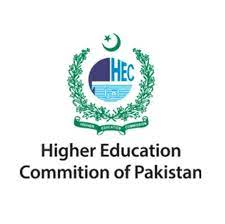Multivariate Analysis of Copepod’s Distribution in Jallo Lake, Lahore Pakistan
Multivariate Analysis of Copepods
DOI:
https://doi.org/10.54393/mjz.v5i01.97Keywords:
Copepods, Canonical Component Analysis, Dendrogram, Diacyclops thomsaiAbstract
Copepods are valuable zooplankton found globally. Fish eat them. Any water ecosystem has food chains and webs. Their diversity and density depend on physicochemical factors. Objective: The Jallo Lake was targeted for the investigation of the spatio-temporal distribution of copepods from January to December 2023. Methods: Copepods were collected from Jallo Park's freshwater with a zooplankton mesh. These organisms were species-classified using conventional keys. Separate water samples were taken to examine physicochemical characteristics. Sedgwick Rafter chamber for species counting. PAST software was used for PCA I & II and CCA. Results: Ten species and their nauplius larvae from seven orders were identified in this study. The study examined conductivity, oxygen saturation, dissolved oxygen, pH, and transparency. Air and water temperature was also recorded. Analysis of Variance (ANOVA) for physicochemical properties, excluding transparency, was statistically significant at (= 0.05, P = 0.000). Copepod variety and density peaked in June and July and dropped in October and December. The dendrogram showed three cluster-level variations. Plotting copepod species and month abundance curves. Principal component analysis (PCA I, PCA II) was used to correlate months, copepod species, and physicochemical parameters. Canonical component analysis (CCA) shows diversity similarities between sites on the same water body and links species abundance to environmental conditions. Conclusions: Only ten copepod species from seven orders and nauplius larvae were isolated from the aquatic body under research during the study months. Copepod diversity and density in freshwater lakes depended on environmental conditions.
References
Hayee S, Akhter N, Hanif K, Nawaz F, Sulehria AQ. An assessment of zooplankton community and physico-chemical parameters of safari zoo lake, Lahore. FUUAST Journal of Biology. 2021 Jun; 11(1): 29-35.
Hayee S, Arshad S, Sundas R, Akhter N, Sulehria AQ. Diversity Analysis of Rotifers from Temporary Spring Pools of Jallo Park, Lahore, Pakistan: Diversity Analysis of Rotifers from Jallo Park, Lahore, Pakistan. Pakistan BioMedical Journal. 2019 Jun; 2(1). doi: 10.52229/pbmj. v2i1.31.
Akhtar N, Hayee S, Nawaz F, Nadeem A, Sulehria AQ, Ashfaq F. Impacts Of Physicochemical Parameters On Zooplankton Biodiversity Recorded From Safari Zoo Lake Lahore, Punjab, Pakistan. Pakistan Journal of Emerging Science and Technologies (PJEST). 2022; 3(2): 1-2. doi: 10.58619/pjest. v3i2.75.
Nawaz F, Nadeem A, Sulehria AQ, Hussain A, Akhtar N, Hayee S et al. The Impacts of Physico-chemical Parameters on Copepod's Population, Recorded From Jallo Lake, Lahore, Punjab, Pakistan. Pakistan Journal of Emerging Science and Technologies (PJEST). 2022; 3(2): 1-2. doi: 10.58619/pjest.v3i2.82.
Shakoor S, Nadeem A, Hayee S, Akhtar N, Nawaz F, Ashfaq F, Sulehria AQ. Biodiversity of Rotifers Recorded from the Littoral Zone of a Flood Plain. Pakistan Journal of Emerging Science and Technologies (PJEST). 2023 May; 4(2): 1-0. doi: 10.58619/pjest.v4i2.110.
Bernhardt JR, O'Connor MI, Sunday JM, Gonzalez A. Life in fluctuating environments. Philosophical Transactions of the Royal Society B. 2020 Dec; 375(1814): 20190454. doi: 10.1098/rstb.2019.0454.
Dinesh Kumar S, Santhanam P, Ananth S, Kaviyarasan M, Nithya P, Dhanalakshmi B et al. Evaluation of suitability of wastewater-grown microalgae (Picochlorum maculatum) and copepod (Oithona rigida) as live feed for white leg shrimp Litopenaeus vannamei post-larvae. Aquaculture International. 2017 Feb; 25: 393-411. doi: 10.1007/s10499-016-0037-6.
Sørensen L, Rogers E, Altin D, Salaberria I, Booth AM. Sorption of PAHs to microplastic and their bioavailability and toxicity to marine copepods under co-exposure conditions. Environmental Pollution. 2020 Mar; 258: 113844. doi: 10.1016/j.envpol.2019.113844.
El-Naggar HA, Allah HM, Masood MF, Shaban WM, Bashar MA. Food and feeding habits of some Nile River fish and their relationship to the availability of natural food resources. The Egyptian Journal of Aquatic Research. 2019 Sep; 45(3): 273-80. doi: 10.1016/j.ejar.2019.08.004.
Rosenblatt AE and Schmitz OJ. Climate change, nutrition, and bottom-up and top-down food web processes. Trends in Ecology & Evolution. 2016 Dec; 31(12): 965-75.doi: 10.1016/j.tree.2016.09.009.
Pinti J, Kiørboe T, Thygesen UH, Visser AW. Trophic interactions drive the emergence of diel vertical migration patterns: a game-theoretic model of copepod communities. Proceedings of the Royal Society B. 2019 Sep; 286(1911): 20191645. doi: 10.1098/rspb.2019.1645.
Øie G, Galloway T, Sørøy M, Holmvaag Hansen M, Norheim IA, Halseth CK et al. Effect of cultivated copepods (Acartia tonsa) in first‐feeding of Atlantic cod (G adus morhua) and ballan wrasse (L abrus bergylta) larvae. Aquaculture Nutrition. 2017 Feb; 23(1): 3-17. doi: 10.1111/anu.12352.
Harding G, Dalziel J, Vass P. Bioaccumulation of methylmercury within the marine food web of the outer Bay of Fundy, Gulf of Maine. PloS One. 2018 Jul; 13(7): e0197220. doi: 10.1371/journal.pone.0197220.
Fort J, Grémillet D, Traisnel G, Amélineau F, Bustamante P. Does temporal variation of mercury levels in Arctic seabirds reflect changes in global environmental contamination, or a modification of Arctic marine food web functioning?. Environmental Pollution. 2016 Apr; 211: 382-8. doi: 10.1016/j.envpol.2015.12.061.
Pio CA, Sousa Marques JC, Cabral HN, Da Maria Soares AMV, De Barros Brito Queiroga HJ, De Schamphelaere K et al. The Effects of Anthropogenic Stressors on the Food Quality in the Estuarine System [Dissertation]. [Protugal]: University of Aveiro,2016.
Tsagaraki TM, Pree B, Leiknes Ø, Larsen A, Bratbak G, Øvreås L et al. Bacterial community composition responds to changes in copepod abundance and alters ecosystem function in an Arctic mesocosm study. The ISME Journal. 2018 Nov; 12(11): 2694-705. doi: 10.1038/s41396-018-0217-7.
Bruno MC, Reid JW, Perry SA. A list and identification key for the freshwater, free-living copepods of Florida (USA). Journal of Crustacean Biology. 2005 Jul; 25(3): 384-400. doi: 10.1651/C-2538
Huggett JA and Bradford-Grieve JM. Guide to some common copepods in the Benguela Current Large Marine Ecosystem. 2007 [Last cited: 1ST Mar 2024]. Available at: https://www.researchgate.net/publication/329779663_Guide_to_some_common_copepods_in_the_Benguela_Current_LME. doi: 10.13140/RG.2.2.16866.99524.
Rice E.W, Baird R.B, Eaton A.D. Standard Methods for the Examination of Water and Waste Water.23rd Edition. United States: American Public Health Association, American Water Works Association, Water Environment Federation.; 2017.
Segers H. The nomenclature of the Rotifera: annotated checklist of valid familyand genus-group names. Journal of Natural History. 2002 Apr; 36(6): 631-40. doi: 10.1080/002229302317339707.
Kozel P. Ecological evaluation of aquatic and terrestrial subterranean fauna in a karst cave [Doctoral dissertation]. [Slovenia]: University of Nova Gorica, 2018. doi:
McKinstry CA and Campbell RW. Seasonal variation of zooplankton abundance and community structure in Prince William Sound, Alaska, 2009–2016. Deep Sea Research Part II: Topical Studies in Oceanography. 2018 Jan; 147: 69-78. doi: 10.1016/j.dsr2.2017.08.016.
Brito-Lolaia M, de Figueiredo GG, Neumann-Leitão S, Yogui GT, Schwamborn R. Can the stable isotope variability in a zooplankton time series be explained by its key species?. Marine Environmental Research. 2022 Nov; 181: 105737. doi: 10.1016/j.marenvres.2022.105737
Santos JS, Simões NR, Sonoda SL. Spatial distribution and temporal variation of microcrustaceans assembly (Cladocera and Copepoda) in different compartments of a reservoir in the brazilian semiarid region. Acta Limnologica Brasiliensia. 2018 Apr; 30: e108. doi: 10.1590/s2179-975x9616.
Abo-Taleb H, Ashour M, El-Shafei A, Alataway A, Maaty MM. Biodiversity of calanoida copepoda in different habitats of the North-Western Red sea (Hurghada Shelf). Water. 2020 Feb; 12(3): 656. doi: 10.3390/w12030656.
Bulut H and Saler S. Effect of physicochemical parameters on zooplankton at a freshwater body of Euphrates Basin (Elazıg-Turkey). Cellular and Molecular Biology. 2019 Jan; 65(1): 8-13. doi: 10.14715/cmb/2019.65.1.2.
Downloads
Published
How to Cite
Issue
Section
License
Copyright (c) 2024 MARKHOR (The Journal of Zoology)

This work is licensed under a Creative Commons Attribution 4.0 International License.
This is an open-access journal and all the published articles / items are distributed under the terms of the Creative Commons Attribution License, which permits unrestricted use, distribution, and reproduction in any medium, provided the original author and source are credited. For comments editor@markhorjournal.com











